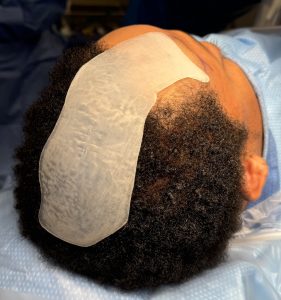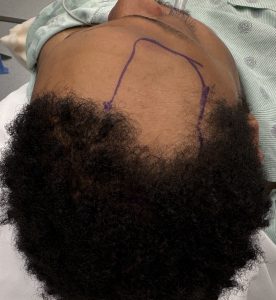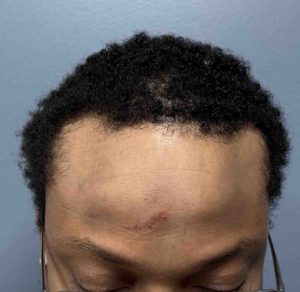Background: The skull is a collection of differing curved bone shapes that create an ovoid shape that is somewhat similar to that of an egg. (wider in the back than in the front) But because of its complex shape and the large number of developmental factors that come into play in its formation skull asymmetries are not rare. They can occur in a wide variety of geometric manifestations from flat spots, indents,to bulges. There are a few distinct types of skull asymmetries that are deformationally syndromic such as plagiocephaly. But many skull asymmetries defy a specific reason as to their occurrence.
One unique type of skull asymmetry is a linear depression running from front to back. When that occurs in a bilateral presentation it can be associated with a scaphocephalic head shape of which the most severe would be sagittal craniosynostosis. But when it occurs on just one side and is moderate by comparison there is no good explanation as to why. This is appears a unilateral depression from the forehead back along the parasagittal area to the back of the head.
In treating such a linear skull depression they are often large in surface area but not necessarily as thick (deep) as one might think. This is where the custom implant design process has a huge advantage. Using a mirroring technique from the opposite normal side the exact dimensions of what is missing can be determined from which the implant is designed. This becomes particularly relenant when the scalp incision needed to place it is going to be small. (blinded implant placement)




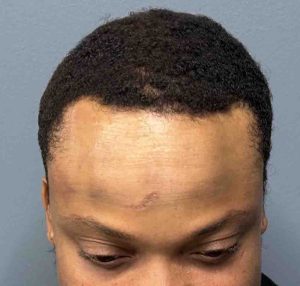
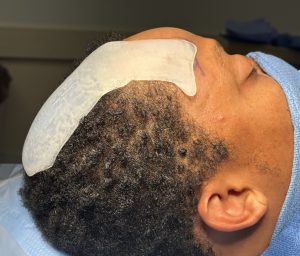
Key Points:
1) Skull asymmetries come in a wide variety of shapes of which the linear skull depression is one type.
2) A custom skull implant design is the most effective method to get the correct surface area coverage and thicknesses of the linear depression.
3) A linear custom skull implant is optimally placed through a small incision centered off the mid portion of its length.
Dr. Barry Eppley
World-Renowned Plastic Surgeon






